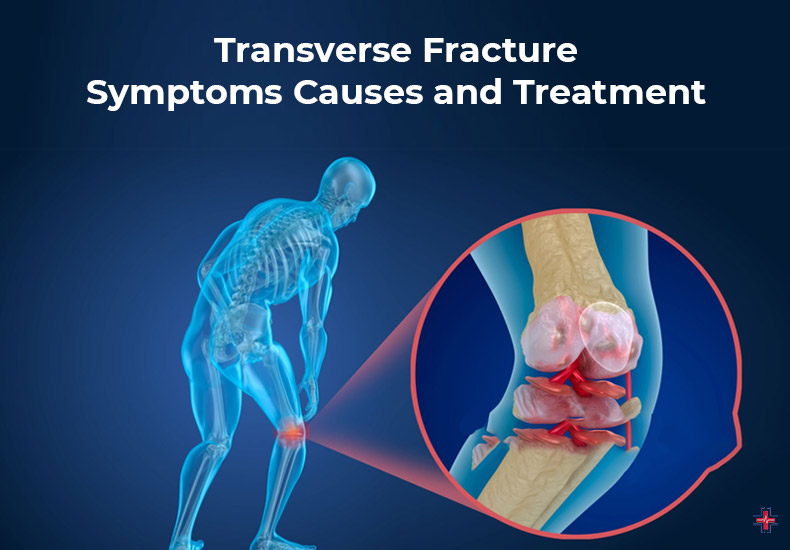Do you ever find yourself unable to move a particular body part frequently? If so, you should be aware that it may be a sign of a transverse fracture. The most frequent cause of this fracture is trauma or incident, such as falling off, etc. Therefore, you must not ignore the issue and should contact a doctor for the appropriate course of action.
If you’re not familiar with the ailment, read on as we go into great detail regarding the transverse fracture in this article.
Transverse Fracture Definition
One kind of fractured bone is a transverse fracture. Transverse fractures occur in a direction opposed to the direction of your bone and travel horizontally perpendicular to it. These may also be known as complete fractures. This indicates that the break’s line passes through your entire bone.
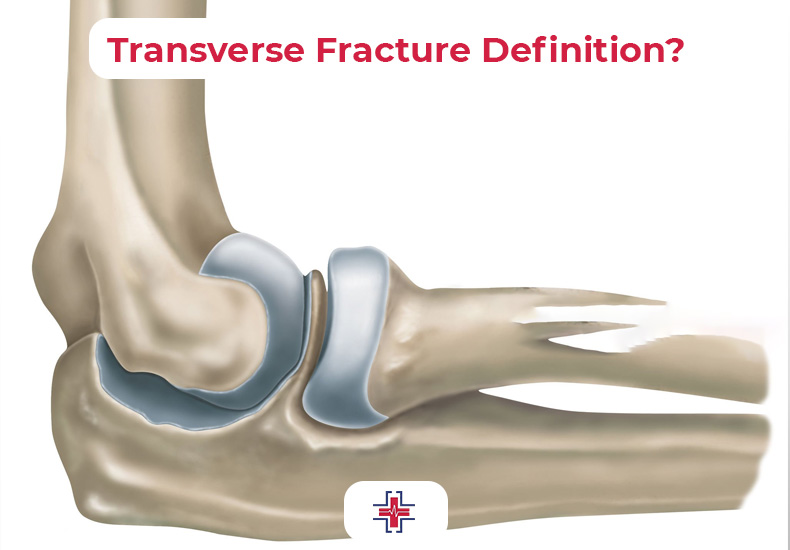
Long bones in your body are typically affected by transverse fractures. Among the most typical are:
- Femur (thigh).
- Tibia (shin).
- Fibula (calf).
- Humerus (upper arm).
- Radius and ulna (forearm).
- Clavicle (collarbone).
Transverse fractures are almost always caused by traumas like falls or car accidents. You might need surgery to repair your bone. Some people only need a splint or cast for the bone to heal.
How Does Transverse Fracture Occur?
Transverse fractures among young individuals occur because of some kind of collision that is of high energy. It is usually experienced by individuals when there is a breakage in the bone perpendicular to its length. The pattern of fracture is a straight line functioning in the opposite bone direction. It can happen to any bone present in the body, however, the target is mostly the long bones after a fall or incident.
Who Gets Transverse Fractures?
Transverse fractures can affect anyone. This is especially true because they’re caused by accidents and traumas.
If you’re at risk for falls you might be more likely to experience a transverse fracture. People with osteoporosis (weakened bones) have an increased risk for all types of broken bones, including transverse fractures.
How Serious is a Transverse Process Fracture?
One sort of spinal fracture is a transverse process fracture, which affects the bones that make up your spinal column. The process is a bone projection on the vertebral side. They are frequently brought on by traumas from any other kind of shattered bone. The transverse process fractures are caused by several causes. One of these is osteoporosis, which causes the bones to weaken without the patient’s understanding. While transverse process fractures can happen anywhere in the spine, they most frequently happen in the lower back.
Is Transverse Fracture Painful?
Indeed, a transverse fracture hurts, and those who have one may also feel soreness, edema, or tightness. Acute compartment syndrome is one of the consequences associated with transverse process fractures that can affect certain people. It’s a painful condition where dangerously high levels of muscular pressure develop. In more extreme circumstances, surgical emergencies may also be necessary. It is advised that people who are in discomfort speak with an orthopedic specialist.
What is the Function of the Lumbar Transverse Process Fracture?
The transverse process serves as a point of attachment for muscles that help move the vertebrae as well as ligaments that stabilize the vertebral column. Each area has characteristic shapes for this structure.
How Do You Treat a Lumbar Transverse Fracture?
Transverse fractures are almost always caused by traumas like falls or car accidents. You might need surgery to repair your bone. Some people only need a splint or cast for the bone to heal. How long it takes to recover fully depends on which of your bones are fractured and what caused the breaks.
How Do You Manage a Transverse Spine Fracture?
Transverse process fractures are predominantly treated with a gradual increase in motion, with or without bracing, based on comfort level. Most often, patients are sent home to recover as these injuries do not cause mechanical instability to the spine. They’ll be given a back brace to help keep them somewhat immobile, told to intermittently ice for 48 hours, to lie flat, not to sit much, to rest, and to take their pain medication.
Transverse Fractures vs. Transverse Process Fractures
Transverse fractures and transverse process fractures are different types of bone fractures. Even though they have similar names, they’re very different injuries.
Transverse fractures occur when your bone is broken perpendicular to its length. The fracture pattern is a straight line that runs in the opposite direction of your bone. They can happen to any bone in your body but usually affect longer bones after a trauma like a fall or accident.
Transverse process fractures are a type of spinal fracture. The transverse process is the bony projection on either side of your vertebrae (the bones that make up your spinal column). They’re usually caused by traumas like any other type of broken bone. Some transverse process fractures are caused by osteoporosis weakening your bones without you knowing. Transverse process fractures can happen along any part of your spine, but they’re most common in your lower back (your lumbar spine).
What Are the Symptoms of Transverse Fracture?
Transverse fracture symptoms include a few that should not be disregarded. It’s critical to contact the physician as soon as possible. Pain, swelling, soreness, difficulty moving any part of your body, bruises, discoloration, and an unusual lump or deformity are all signs of a transverse fracture.
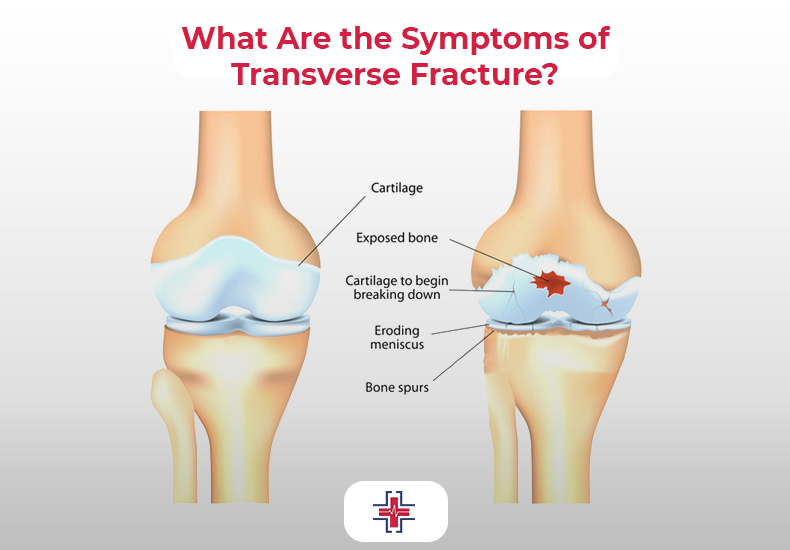
Symptoms of a transverse fracture include:
- Pain.
- Swelling.
- Tenderness.
- Inability to move a part of your body like you usually can.
- Bruising or discoloration.
- A deformity or bump that’s not usually on your body.
Causes of Transverse Fractures
One of the common transverse fracture causes includes motor vehicle crashes or motorcycle incidents of the femoral shaft fracture. Another main cause of transverse fracture is being hit by a car while walking. Other factors contributing to transverse fracture include falling from heights, gunshot wounds, etc. Older people can experience the problem due to lower-force accidents or falling due to standing for a long period.
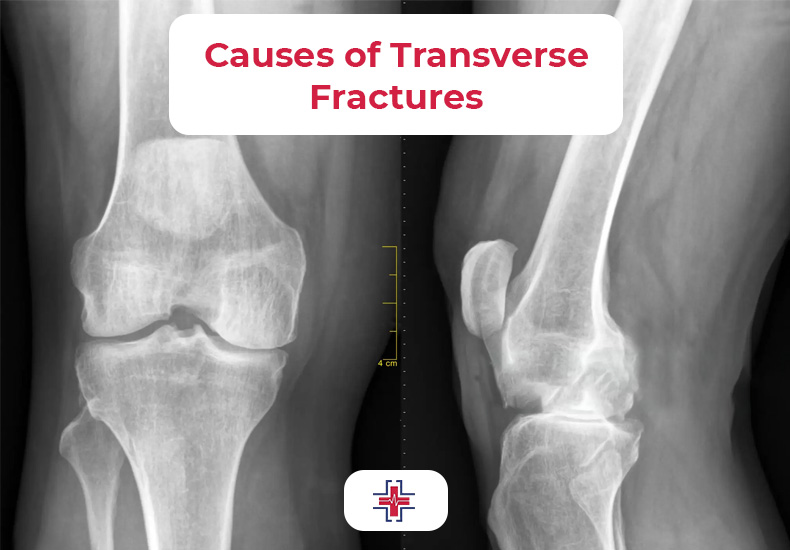
Any impact on your bones can cause a transverse fracture. Some of the most common causes include:
- Falls.
- Car accidents.
- Sports injuries.
Transverse Process Fracture Treatment
How your transverse fracture is treated depends on the severity of the original break. Your broken bones need to heal back together. Depending on how damaged they are and what caused them to break, there are a few treatments your provider might use.
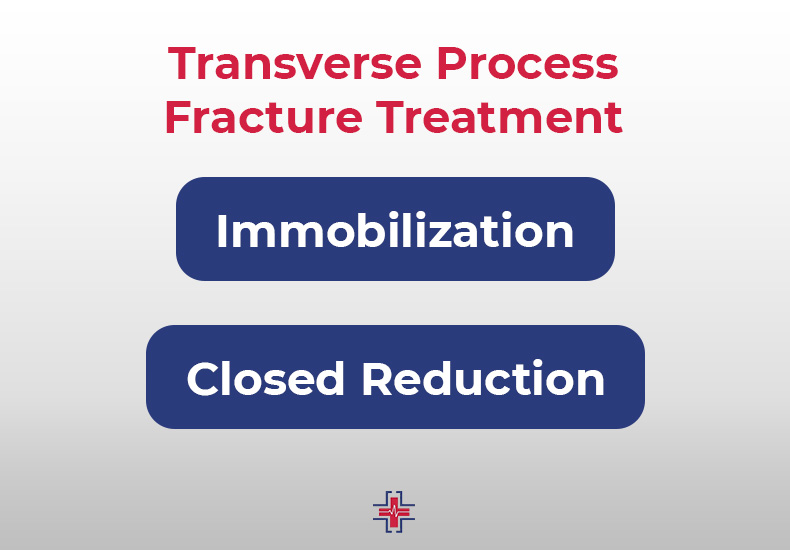
Immobilization
If your fracture is mild and the bones did not move far out of place (Fracturesnon-displaced), you might only need a splint or cast. Splinting usually lasts for three to five weeks. If you need a cast, it will likely be for longer, typically six to eight weeks. In both cases, you’ll likely need follow-up X-rays to make sure your bones are healing correctly.
Closed Reduction
More severe breaks require a closed reduction to set (realign) your bones. During this non-surgical procedure, your provider will physically push and pull your body on the outside to line up the broken bones inside you. To prevent you from feeling pain during the procedure you’ll receive one of the following:
- Local anesthetic to numb the area around your fracture.
- Sedatives to relax your whole body.
- General anesthesia to make you sleep through the procedure.
After the closed reduction, your provider will put you in a splint or cast. Over-the-counter NSAIDs like aspirin or ibuprofen can lead to bleeding and other complications after surgery. Your surgeon will talk to you about the medications you can take to reduce pain after your surgery.
Internal Fixation
The most severe fractures require surgery. Your surgeon will realign (set) your bones to their correct position and then secure them in place so they can heal and grow back together. They usually perform what’s called an internal fixation, which means your surgeon inserts pieces of metal into your bone to hold it in place while it heals. You’ll need to limit how much you use the surgically repaired part of your body to make sure your bone can fully heal.
Internal fixation techniques include:
- Rods: A rod inserted through the center of your bone that runs from to bottom.
- Plates and screws: Metal plates screwed into your bone to hold the pieces together in place.
- Pins and wires: Pins and wires hold pieces of bone in place that are too small for other fasteners. They’ll typically be used at the same time as either rods or plates.
Some people live with these pieces inserted in them forever. You might need follow-up surgeries to remove them
Transverse Process Fracture Healing Time
It might take a few weeks for your symptoms to improve. Depending on which type of surgery you had to repair your transverse fracture and which bones were broken you should be able to start moving again in a few weeks.
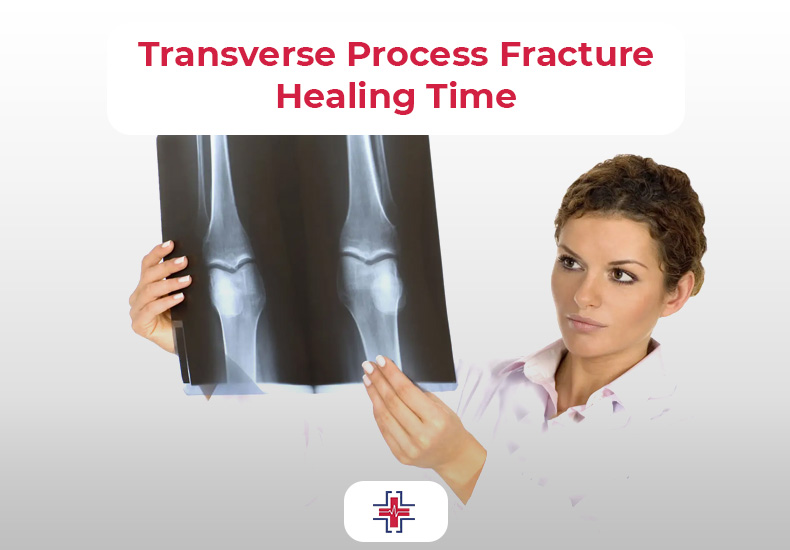
Contact your healthcare provider right away if you experience intense pain that doesn’t get better.
What are the Transverse Process Fracture Long-term Effects
Transverse process fractures may cause Severe pain that may be worse during movement. Tenderness, swelling, and possible bruising over the area. Numbness, tingling, or muscle weakness.
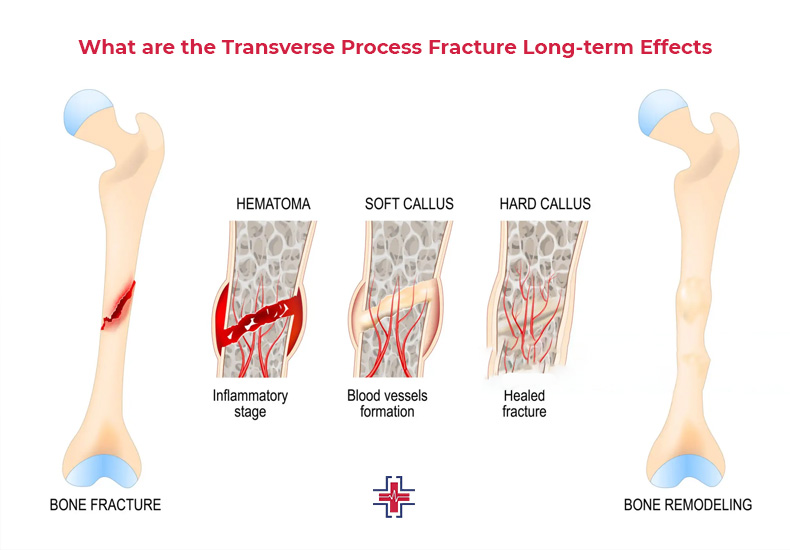
Follow these general safety tips to reduce your risk of an injury:
- Always wear your seatbelt.
- Wear the right protective equipment for all activities and sports.
- Make sure your home and workspace are free from clutter that could trip you or others.
- Always use the proper tools or equipment at home to reach things. Never stand on chairs, tables, or countertops.
- Follow a diet and exercise plan that will help you maintain good bone health.
- Talk to your provider about a bone density test if you’re older than 50 or if you have a family history of osteoporosis.
Use your cane or walker if you have difficulty walking or an increased risk for falls.
Complications of Transverse Process Fracture
Transverse fracture surgery complications include:
- Acute compartment syndrome (ACS): A build-up of pressure in your muscles may stop blood from getting to tissue, which can cause permanent muscle and nerve damage.
- Malunion: This happens when your broken bones don’t line up correctly while they heal.
- Nonunion: Your bones may not grow back together fully or at all.
- Bone infection (osteomyelitis): If you have an open fracture (the bone breaks through your skin) you have an increased risk of bacterial infection.
- Other internal damage: Fractures can damage the area around the injury including your muscles, nerves, blood vessels, tendons, and ligaments.
Open vs. Closed Fractures
Your healthcare provider will classify your fracture as either open or closed. If you have an open fracture your bone breaks through your skin. Open fractures usually take longer to heal and have an increased risk of infections and other complications. Closed fractures are still serious, but your bone does not push through your skin.
Displaced Transverse Fractures
Displaced or non-displaced are more words your provider will use to describe your fracture. A displaced fracture means the pieces of your bone moved so much that a gap formed around the fracture when your bone broke. Non-displaced fractures are still broken bones, but the pieces weren’t moved far enough to be out of alignment during the break. Displaced fractures are much more likely to require surgery to repair.
FAQs
How Are Transverse Fractures Diagnosed?
A transverse fracture X-ray will confirm any fractures and show how damaged your bones are.
What is Transverse Process Fracture Recovery Time?
It may take up to 6 weeks for a transverse spinal fracture to heal. Healing time varies by age and your overall health. Children and people in better overall health heal faster. You will need to adjust your activities while your spine heals, but complete rest is rarely required and can slow recovery.
How Can I Prevent a Transverse Fracture?
Transverse fractures are usually caused by falls or other accidents that are hard to prevent. If you need them, use a cane or walker to increase your stability and prevent falls.
Women, people assigned female at birth, and adults older than 50 have an increased risk of developing osteoporosis. Talk to your provider about a bone density screening that can catch osteoporosis before it causes a fracture.
Takeaway
You should make a full recovery after experiencing a transverse fracture, even if you need surgery to repair your bones. Make sure to go slow and follow your recovery plan as closely as possible. It can take months to get back to your usual routine and activities, but rushing your body while it’s healing can lead to complications or more damage to your fractured bone.
Ask your doctor at the ER of Mesquite how you can keep your bones strong and healthy, and get regular bone density screenings if you’re older than 50 or have a family history of osteoporosis.
